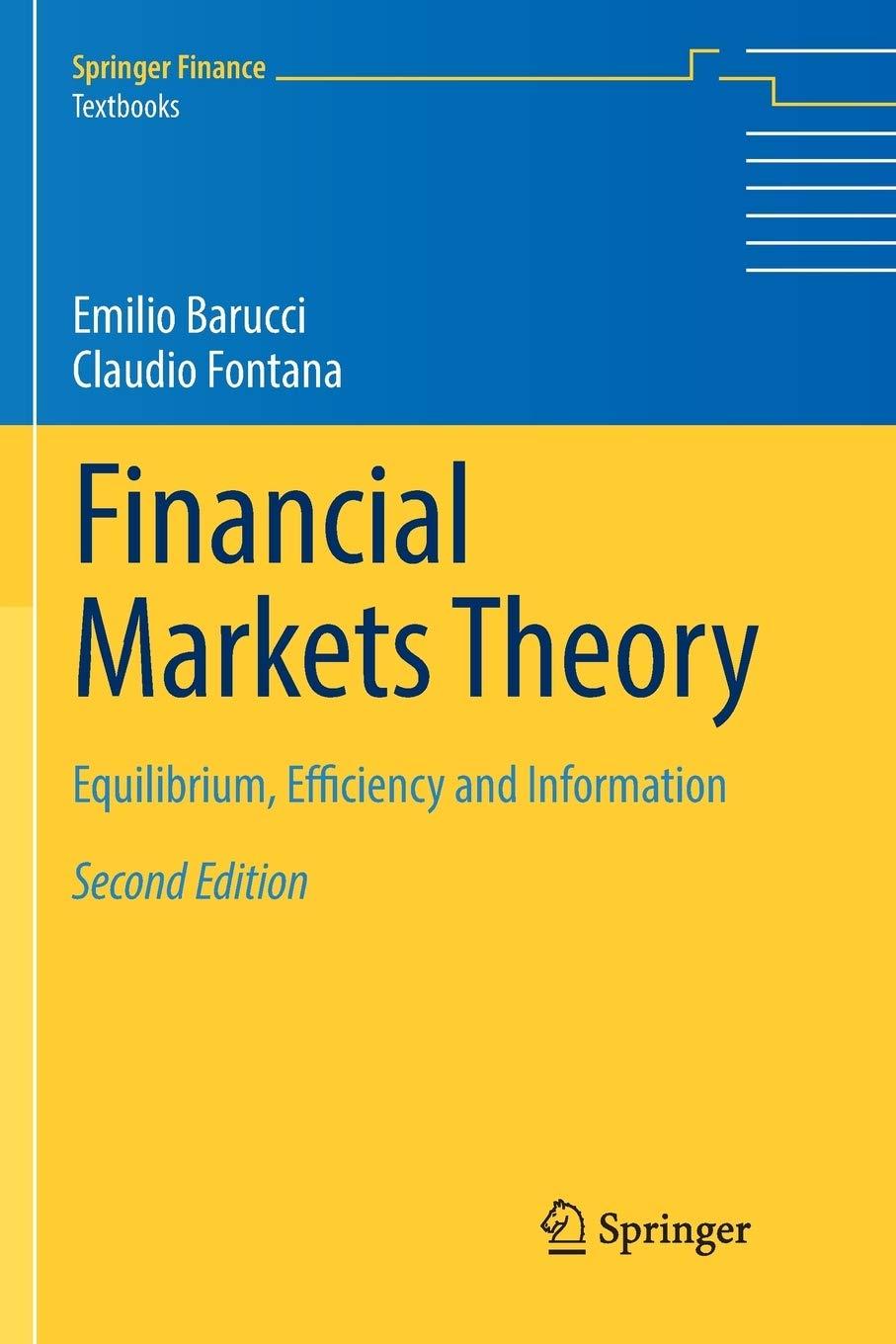Under the assumptions of Sect. 6.4, suppose that the economy is infinitely-lived (i.e., (T=infty) ), with a
Question:
Under the assumptions of Sect. 6.4, suppose that the economy is infinitely-lived (i.e., \(T=\infty\) ), with a representative agent characterized by the utility function \(\sum_{t=0}^{\infty} \delta^{t} c_{t}^{1-\alpha} /(1-\alpha)\) and that the growth rate process \(\left(x_{t}\right)_{t \in \mathbb{N}}\) of the aggregate endowment (i.e., \(x_{t}=e_{t} / e_{t-1}\), for \(t \in \mathbb{N}\) ) evolves as a two-state Markov chain with values \(h\) and \(l\) (with \(h>l\) ) and transition probabilities\[\Pi=\left[\begin{array}{ll}\pi_{l l} & \pi_{l h} \\\pi_{h l} & \pi_{h h}\end{array}\right]\]
where \(\pi_{l h}=\mathbb{P}\left(x_{t+1}=h \mid x_{t}=l\right)\), for all \(t \in \mathbb{N}\), and similarly for the other quantities. Compute
(i) the risk free rates \(r_{f}(l)\) and \(r_{f}(h)\) corresponding to the two possible states of aggregate endowment growth rate;
(ii) the price of the security delivering the aggregate endowment as dividend;
(iii) the expected return of the above security.
Step by Step Answer:

Financial Markets Theory Equilibrium Efficiency And Information
ISBN: 9781447174042
2nd Edition
Authors: Emilio Barucci, Claudio Fontana





